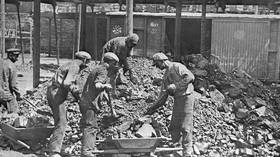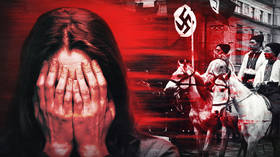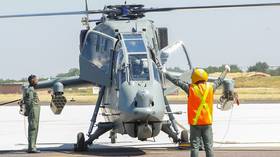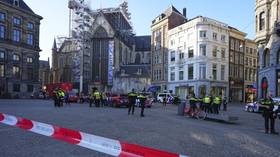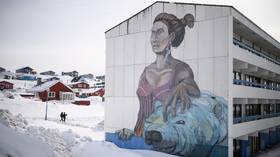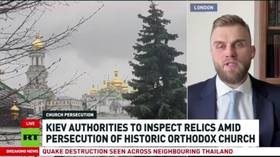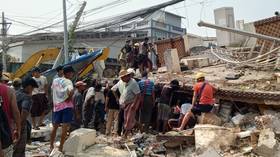Bloodshed in Transnistria: A brutal precedent of a post-Soviet war 20 years before Ukraine
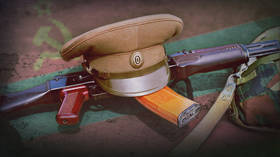
The current crisis in Ukraine, in which Russia has recognized the rebel republics in the Donbass, looks unusual, but this is not a new story for the post-Soviet space. Something similar to the events happening in the Donbass today took place in 1992, and the enclave that then arose still exists.
The unrecognized territory, formally part of Moldova, was formed as a result of a short war, which was simultaneously absurd and cruel. That war contains many parallels with the current conflict – including even the personal stories of many of its participants.
The collapse of the Soviet Union was accompanied by a series of armed conflicts. Some have gone down in history as examples of insane, unbridled violence, comparable only to conflicts in Africa and the Middle East. However, a strange little war in the Transnistria region stands out among them.
This is a barely discernible area on the map, stretching north to south along the Dniester River on the border of Ukraine and Moldova, about 200 kilometers long and only about 20 across. At the end of the Soviet era, it had a population of about 680,000. Before the collapse of the USSR, Transnistria had been a sleepy land where almost nothing happened for many decades.
In 1992, a conflict raged there for several months, when rebels made up of Russians and Ukrainians took up arms against the government of the newly independent Moldova. Despite its very small scale, this war became a kind of prologue for the entire bloody history of post-Soviet armed conflicts.
Transnistria became part of Russia during the imperial era of the Romanov dynasty. The wars between Saint Petersburg and the Ottoman Empire brought the Russian Empire vast expanses of land north of the Black Sea. Under Catherine II, the border passed just along the banks of the Dniester River, and it was then that the future capital of Transnistria, the town of Tiraspol, was built. A decade and a half later, Russia recaptured Bessarabia from the Turks – the eastern part of the ancient Moldavian principality, whose territory formed the basis of present-day Moldova.
These lands lived more or less peacefully as part of the Russian Empire. The roots of the current problem stretch back to the events of 1917. As a result of the Russian Revolution and Civil War, Moldova became part of Romania, but Transnistria remained with the Soviet Union. The USSR assumed the implicit role of collector of Russian imperial lands, and Transnistriawas singled out as a Moldovan autonomous region for political purposes. Following the events of World War II, Moldova was annexed by the USSR, and Transnistriawas included in its composition.
The problem was that Transnistria was a very specific region for Moldova. Its economic structure was very different from the rest of the republic. Unlike agrarian Moldova, Transnistria was primarily an industrial area. Despite it accounting for just 17 percent of Moldova’s population and very small portion of its territory, by the late Soviet period, its industry provided 40 percent of the republic’s GDP and up to 90 percent of its electricity.
Another major difference was in the region’s ethnic composition. The majority of the Moldovan population were Romanian-speaking Moldovans, related to the their neighbours in Bucharest. However, in Transnistria, the majority of the population was made up of Slavs – Russians and Ukrainians. For obvious reasons, Moldovan nationalism, which came with a revival of ties with Romania, did not find any support in Transnistria at all. In the industrial Russian-speaking and Slavic region, pro-Soviet views remained popular even during the crisis that led to the collapse of the USSR itself.
As long as the Soviet Union remained strong, none of this was a problem. For the USSR, ethnic nationalism was unacceptable. The peoples were fused together by ideology – at least officially. However, by the end of the 80’s, the USSR was torn apart by a variety of difficulties. In particular, the national issue had reemerged with a vengeance. During a time when the USSR was experiencing an array of internal problems, the popularity of Soviet ideas was rapidly losing popularity, while nationalist populism was gaining strong momentum among the peoples living on the outskirts of the USSR.
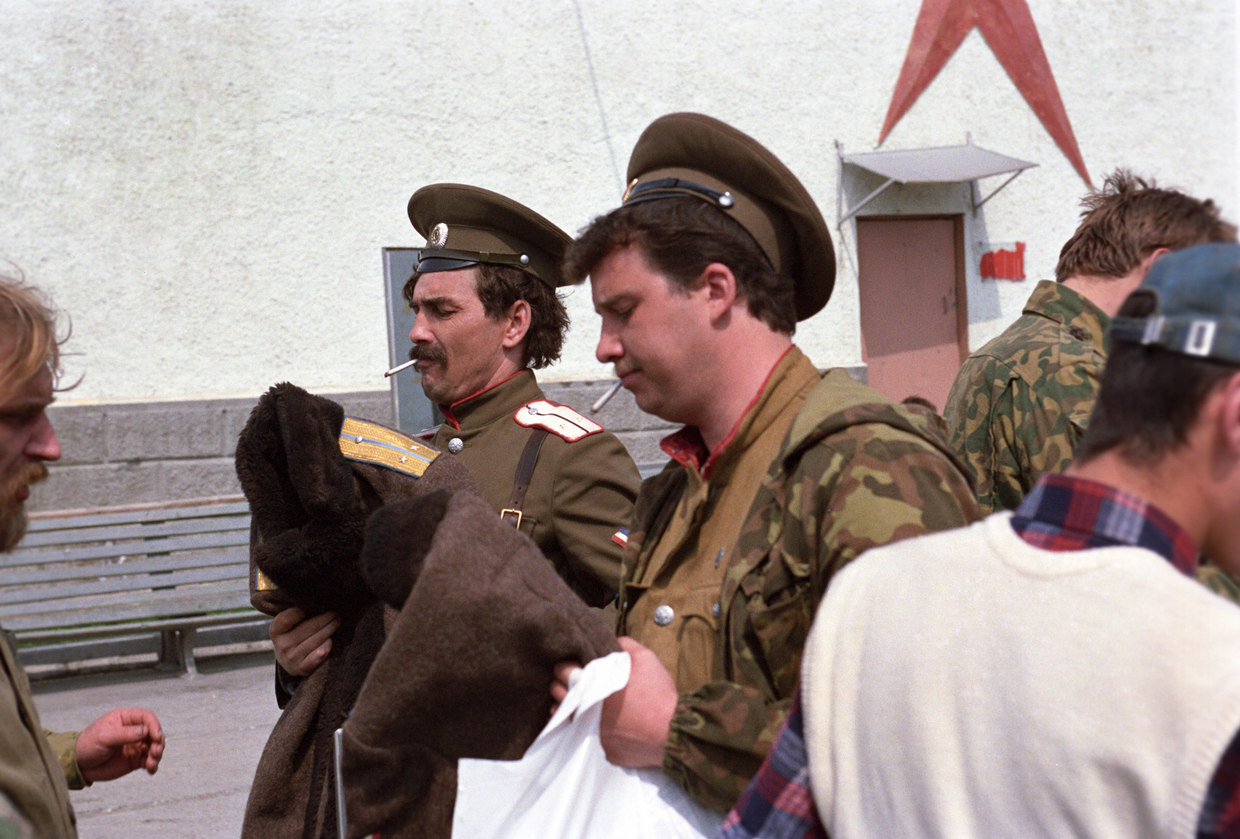
The Soviet project had encouraged the creation of a stratum of intellectuals and managerial personnel in national republics, as it was part of socialist ideology, with its internationalist ideas. However, this now made it possible to create turnkey states: under Soviet rule, the USSR’s ethnic republics had managed to rebuild industry and create more or less functioning national bureaucracies. Meanwhile, the national intelligentsia educated by the USSR could adapt its ideology to support the idea of seceding from the Soviet Union.
Finally, another important detail: the Soviet 14th Army was based in Transnistria. Though its complex of military facilities were more akin to giant arsenals than a full-fledged combat-ready contingent, there were enough weapons to arm one. Furthermore, there were many retired officers living in Transnistria who kept in touch with each other and formed a fairly influential ‘corporation’ in the region.
Transnistria ceased to be a quiet picturesque corner of the USSR by about 1989, when Moldova was experiencing a surge of nationalism and ethnic romanticism. The leaders of the emerging state dismissed its Soviet past, on the one hand, but, on the other, were actually part and parcel of the Soviet intelligentsia, with its vague ideas about how states function in the West. Naturally, this also affected their views on how a nation that has just achieved statehood should build relations with its citizens.
The beliefs of these people ranged from sincere fanaticism to a desire to play the national card to score political points. They included, for example, Mircea Druk – who expressed nationalist convictions back in the heyday of the Soviet Union but was, in fact, a typical representative of the Soviet nomenklatura who revelled in the role of a privileged official. Another leader of the Moldovan independence movement, Mircea Snegur, was also originally a party careerist, but the collapse of the USSR opened the way for him to transform himself from an ordinary regional official into the leader of a small and poor, but separate state.
A separate problem was presented by the idea of reunifying with Romania, to which the Moldovans are close in blood and language. Though these views might have been popular in ‘native’ Moldovan society at that time, such a future was categorically unacceptable for Transnistrians.
It was the extreme radicalism and extreme naivety of the event’s participants, along with an unwillingness to compromise, that led the issue to escalate into civil confrontation, and eventually war.
It all started in 1989, when a draft law was introduced in Moldova on the adoption of the Moldovan language as the only state language, and its transition to the Latin alphabet. This decision was made based solely on the nationalistic feelings of Moldovan ultra-patriots, without any attempts to sound out the public on the issue.
In Transnistria, the situation was particularly difficult. On the one hand, people were frightened by the increasingly harsh nationalist rhetoric, and, on the other, far from everyone in the region spoke Moldovan. A strong sense of solidarity had already developed among Transnistria’s population, and workers from large industrial enterprises and retired military personnel were well united. In the same year, they formed the United Council of Labor Collectives (UCLC), which represented the interests of Transnistria as a whole.
In the summer of 1990, Moldova (now the Republic of Moldova) declared independence. And on September 2, the Pridnestrovian Moldavian Republic was already proclaimed at the Congress of deputies of Transnistria. It was headed by an ethnic Russian named Igor Smirnov – the son of a school principal and a journalist, who had worked in industry all his life. Though he had lived in Transnistria only since the 80’s, Smirnov was the director of an electrical plant in Tiraspol and was already well-known in the region.
Transnistrians were motivated by several considerations. On the one hand, given the newly proclaimed Moldovan government’s clumsy actions and its rhetoric, in particular, people were afraid of discrimination by nationalists. On the other, many people wanted either to preserve the Soviet way and order of life, or vice versa, wanted financial concessions for Moldova’s most economically important region.
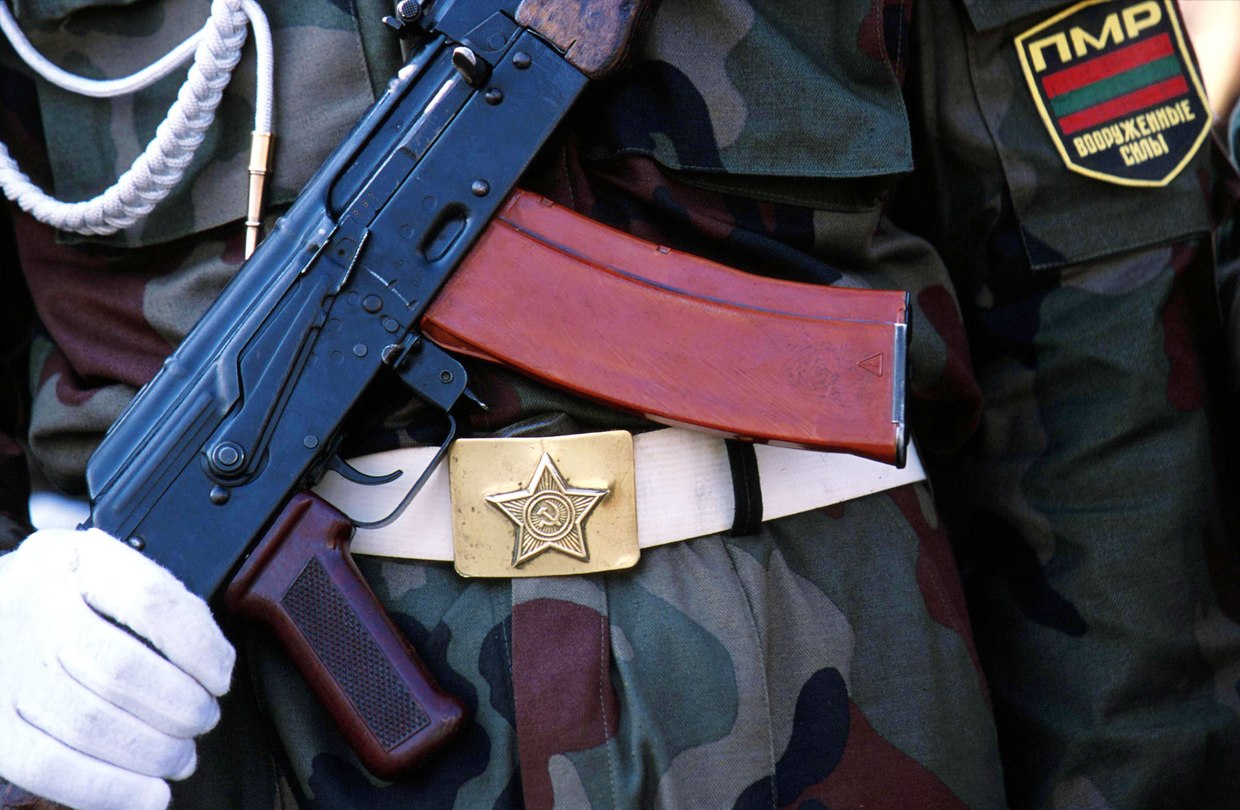
However, in Chisinau, Moldova’s capital, they had already taken the bit: the romantics there considered all autonomy projects nothing more than an insurrection staged by mutineers. So, the confrontation took shape.
On one side of the barricade were the Transnistrians – ethnic Russians and Ukrainians who held pro-Russian or even Soviet beliefs. On the other remained the bulk of Moldovans, who embraced nationalist ideas.
In reality, the situation was much more complicated. Among the Transnistrians, there were many Moldovans with socialist views, or who simply joined the militia for friends and neighbors. And among the Moldovan security forces, there were many Russians who remained due to career prospects or out of loyalty to the new state.
The Soviet 14th Army, which was headquartered in an ancient 16th-century fortress in the city of Bender, was an important ally of Transnistria from the very beginning. In the chaos that accompanied the collapse of the USSR, it essentially stopped taking orders from Moscow. Though some of the officers hesitated, many actually sympathized with the Transnistrians, especially those whose families lived in Moldova.
The real war was hampered by a lack of weapons, but there was a huge quantity left over in the country’s warehouses. Consequently, both of the forming sides pillaged the Soviet warehouses. Moldova created its own armed forces, initially on the basis of volunteer detachments and police. In Transnistria, they formed their own militia and Republican Guard.
At first, the Moldovans tried to solve the problem simply. Smirnov was abducted while in Ukraine, probably with the knowledge of local special services. However, the confrontation had not yet reached the level of a real war at that time, and the rebel leader was released after he threatened to turn off the lights in Moldova, since its electricity came from Transnistria.
However, it was clear that real battles could be looming on the horizon. Volunteers from Russia and Ukraine came to Transnistria, often with opposite political beliefs – from communists to monarchists. The Russian Cossacks, revitalized amidst the Soviet collapse, also sent an unusually large number of volunteers who stood out with their archaic uniforms and violent temperament.
The local militia also included many of the kinds of characters who come to the fore precisely in an era of anarchy. The most striking of these was Lieutenant Colonel Yuri Kostenko, a Soviet army officer and Afghan war veteran. He had retired from the army because of his difficult temper to become one of the first private entrepreneurs in the city of Bender by the early 90’s. Amidst the escalating conflict, Kostenko formed his own Republican Guard battalion and became famous as an insanely brave and, at the same time, very cruel man, who paid no heed to his superiors. Opinions about him varied. In Bender, he was seen by some as the city’s main crime fighter and, by others, as its main crime boss. In any case, even his enemies noted his bravery, and even his friends reproached him for his ferocity. He quickly established contacts with former colleagues who helped his squad get hold of weapons. Many detachments were created in a similar way, with officers in the Soviet 14th Army actively participating in the formation of the militia with tacit permission of the army’s commander, Gennady Yakovlev.
In 1990, the USSR was already in its death throes, and war was breaking out in Transnistria. The first blood was shed in the town of Dubossary, which is located in the geographical center of the republic. On November 2, 1990, Moldovan police tried to enter the town and met a hostile though unarmed crowd. One of the policemen lost his nerve and opened fire, and three people died. The police themselves did not expect this course of events, but the killings provoked horror and outrage. The war began to take on a life of its own. Up to that time, recruits had been entering the militia in neither a torrent nor a trickle, but now people in the city went en masse to enlist in detachments.
The Moldovans’ plans were simple and quite logical – to force their way across the Dniester River via bridges and cut Transnistria in two.
Not far from Dubossary, there was a small sculpture on a hill depicting a pioneer playing a bugle. Trenches were dug under this trumpeter, and it was used as an orientation point when shooting. By the end of the fighting, the plaster boy, whipped by shrapnel and bullets, looked like a real symbol of the turning point between epochs.
However, neither side had a regular army, and, instead of a blitzkrieg, both Moldovans and Transnistrians fought in the trenches for months. This war differed from the trenches of the First World War, however, in that both sides were poorly prepared and lacked heavy weapons, which prevented effective combat. Another notable difference was that it took place amidst beautiful southern surroundings.
In general, many fighters perceived the coming war as a paramilitary picnic. Soldiers and militiamen often came to the front with canisters of wine, sometimes with girlfriends, and enthusiastically photographed themselves in uniform with their weapons. One fighter recalled that huge cherry trees grew in the neutral zone, which the enemies often climbed to pick while exposing themselves to the line of fire. But then they enjoyed the harvest for which they had risked their lives.
Sometimes these picnics were interrupted by truly fierce battles, however. The Moldovans tried to break through the front, while the militia constantly raided the warehouses of the 14th army, taking away weapons and ammunition. Sometimes, the attendants even asked the raiders to tie them up or beat them a little so that they could honestly say the equipment had been stolen from them.
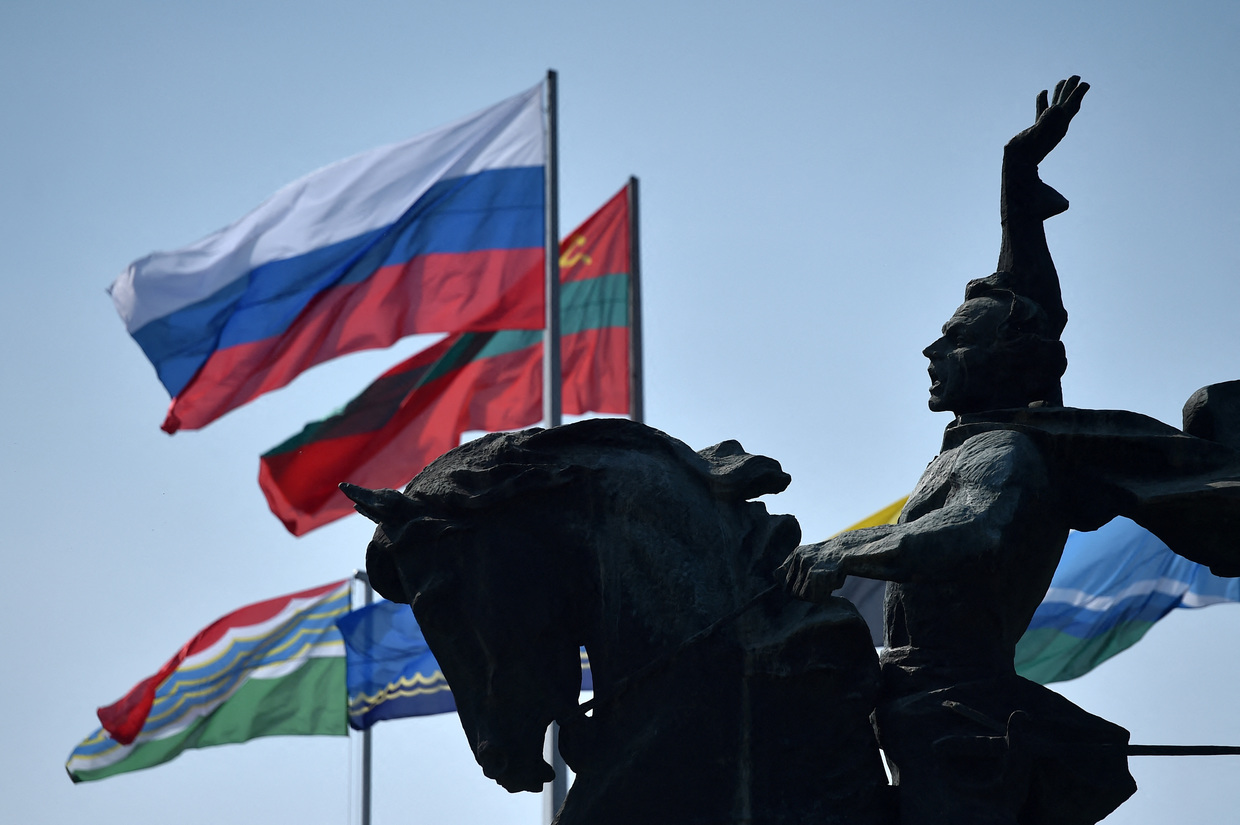
During the time that these bloody picnics lasted, the USSR collapsed, but that changed little for the combatants. The Moldovan side failed to break through the front around Dubossary. One huge factor was that few people in Transnistria or Moldova really wanted to fight. And while the militias were defending their own homes, the Moldovans lacked such motivation. There was no serious reason for this war, and few people wanted to die in it. As a result, the fighting was sluggish.
By the summer of 1992, the Moldovans decided to change the direction of the offensive. This time the target was the city of Bender. Unlike nearly all of the rest of Transnistria, this city is situated on the west bank of the Dniester, so the river did not need to be crossed. On the contrary, the bridge across the Dniester was behind the city’s defenders. In addition, it is a large city by local standards, with more than 140,000 inhabitants, and the key base of the 14th army was located there, which meant it had both an arsenal and a strong contingent of Transdniestrian supporters.
All of these reasonable considerations pushed the Moldovan military to a general battle. However, everything did not go according to plan, and the ministers and generals subsequently placed responsibility onto each other. In the end, many tried to pin the blame on President Mircea Snegur, who, in turn, claimed he knew nothing about the fighting.
Oddly enough, the Moldovan police department continued to work in Bender, mostly defending themselves. However, on June 19, they arrested a major of the Transdniestrian Guard, who was carelessly moving around the city accompanied by only a driver. A spontaneous battle broke out in the city and the police station was surrounded. At that moment, a group of Moldovan troops was approaching Bender, while graduation parties were just taking place in city schools. Later, Moldovans were reminded of the extremely inopportune timing of the attack.
The assault on Bender immediately turned into an incredibly chaotic fight on the streets. The Moldovans managed to break through to the bridge over the Dniester, while Transdniestrian militias tried to force their way into the city from the eastern shore. The Moldovans deployed field guns and began shooting at vehicles trying to get onto the bridge. It all looked like a battle from the Napoleonic era, with cannons firing directly at vehicles and tanks trying to drive into Bender.
Interestingly, this battery was commanded by an ethnic Russian colonel named Leonid Karasev, who lived in Moldova and had been imbued with the ideas of local patriotism. He personally fired a cannon when the young recruits got scared. Meanwhile, on the eastern shore, the Cossacks, having drunk a lot, jumped into cars and literally leaped over the bridge under fire, capturing the battery in hand-to-hand combat. Karasev survived, but the guns were lost. Later, they were driven around Bender covered with graffiti reading something in the spirit of ‘I won’t shoot anymore.’ Reinforcements eventually began to stream into Bender from the eastern bank, while soldiers and officers supporting the Transnistrians, many of whom had families in the city, began to ‘desert to war’ from Bender’s fortress. In order to join the battle, it was enough to walk out of the gate.

The battle for Bender could have been much more destructive than it turned out to be in reality, as a significant part of the town is occupied by industrial facilities, and it was hot and dry outside. Trains hauling fuel were stuck at the station, and the city’s grain elevator was stuffed with dried sunflower seeds. Fires broke out immediately and threatened to completely destroy the city.
Bender was saved thanks to the incredible efforts of its fire service. Fire brigades arrived even from Chisinau, from the opposite side of the front. Firefighter Vyacheslav Chechelnitsky recalled that he had to go out on about a dozen calls every day. Formally, the combatants were ready to let the firefighters do their work, but in practice, both sides consisted of paramilitary militia detachments, volunteers and, at best, police, whose nerves quickly gave way.
In addition, the artillery hitting the city often missed their targets or simply fired at squares. Therefore, many fire vehicles returned from calls literally riddled with damage, and firefighters often crawled to the fires with their hoses. However, by the end of the fighting, the firefighters could be proud of themselves: Bender was saved from the fire. Vyacheslav Chechelnitsky paid a terrible price for this triumph, as his brother Igor, also a firefighter, was killed by mortar fire while extinguishing a burning dormitory.
There were chaotic street battles in the city for several more days. Meanwhile, serious changes were made to Russia’s policy. The 14th Army, once Soviet, was formally transferred to the Russian armed forces, and now the war in Transnistria became Moscow’s problem.
Subsequently, General Alexander Lebed, who was in good standing in the Russian army at the time, arrived in the republic incognito to find out what is happening in Transnistria. He came to an obvious conclusion: there was bloody chaos in the city, and the 14th army was actually out of control, fighting independently and spontaneously.
Lebed began by restoring order in the rear and arresting the looters and bandits who were coming out of the woodwork. Then, on the night of July 2, he organized a short, but very intense artillery bombardment of the advancing Moldovan troops. With his experience as a Soviet general, Lebed despised the Transdniestrian rebels, who he saw as anarchists, while he considered the Moldovan military with their nationalist government fascists and promised to “find them a place on the whipping post.” However, the actual object of both his threats and attacks turned out to be the Moldovan army, as it was the more active party.
The war ended very abruptly. In fact, Lebed used the 14th army as a sledgehammer to beat anyone who did not want to stop the fighting. Among those who were not happy about the cessation of hostilities was the charismatic rebel chieftain Lieutenant Colonel Kostenko. Kostenko had managed to acquire a lot of enemies during the war, including his own superiors, to whom he did not obey in principle. The rebel leader was intercepted on a highway at night and killed. Subsequently, he turned into a kind of ‘king under the mountain’, a local legend, who apparently sometimes goes to his own grave. However, if we exclude the legends, then we still have to admit that this 20th century Robin Hood is dead.
The conflict in Transnistria had reached complete deadlock. Although it turned out to be bloody, with a total of up to a thousand people dead, including about 400 civilians, it was clearly a ‘war without a cause’, and the parties were able to listen to reason. To this day, Transnistria has not completely severed ties with Moldova. Though the Pridnestrovian Moldavian Republic has never been officially recognized, its economy and social infrastructure are functioning. Rebel leader Igor Smirnov became president, and remained so until 2011, when he lost an election. Though he was often accused of corruption, it is worth noting that he calmly handed over his powers when he could not win the vote.
Veterans of Transnistria traveled to other wars in the former USSR. One of the most extraordinary of these was Igor Girkin, later known under the pseudonym ‘Strelkov’. He came to Transnistria as an ordinary rebel armed with his own manual loading World War II rifle, having just graduated from the Historical and Archival Institute in Moscow. This restless man fought in Bosnia on the side of the Serbs, then in Chechnya on the side of the Russian army, and, in 2014, he led the rebels in eastern Ukraine for several months in a war that has much in common with Transnistria's. Ironically, there, he had to face Ukrainian nationalists in battle who, like himself, had fought in Transnistria on the side of the rebels. The biographies of many of the war’s participants are similar. Some fought for idealistic reasons, others out of pure love of adventure, participating in battles in the Balkans, Abkhazia, Ossetia, and Chechnya – in short, all the wars and conflicts resulting from the collapse of the USSR.
After the war, the status of Transnistria itself turned out to be ambiguous. A small Russian peacekeeping contingent remains in the republic to this day, providing work for many of its residents. But the republic has gained no international recognition.
However, it is striking that, compared to other hot spots, the hostilities between the parties in Moldova have been kept to a minimum. Nowadays, Transnistrians and Moldovans often successfully maintain personal ties and economic contact. Although Transnistria very strictly defends its autonomy, it has managed to refrain from destroying ties with the state from which it separated. Fortunately, nationalist ideas began to rapidly lose popularity in Moldova after the war.
The problems of Transnistria and Moldova today are similar – they are poor provincial republics. However, if we talk specifically about the armed conflict, this war turned out to be one of the most deeply frozen in post-Soviet space.
The war in Transnistria is a real monument to both human stupidity and idealism. War is a human tragedy, but many of its participants remember Transnistria as the most romantic of their wars. This Pridnestrovian Moldavian Republic has preserved itself, and although its socialist orientation has changed to a Russian one, or even a kind of fusion of Russian irredentism and Soviet nostalgia, it continues to exist, and the Moldovan side is not disposed to solve the conflict by force.


